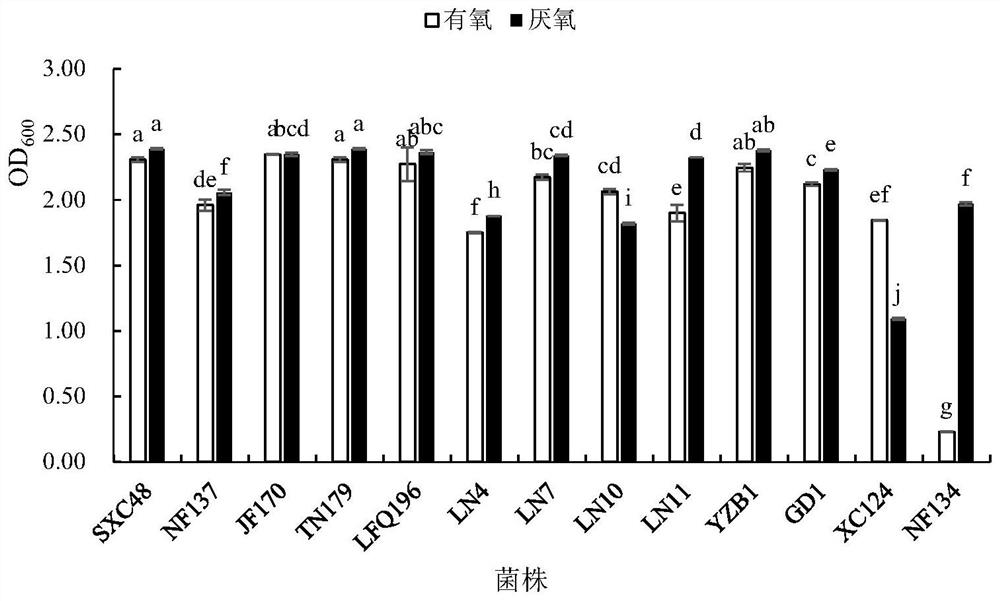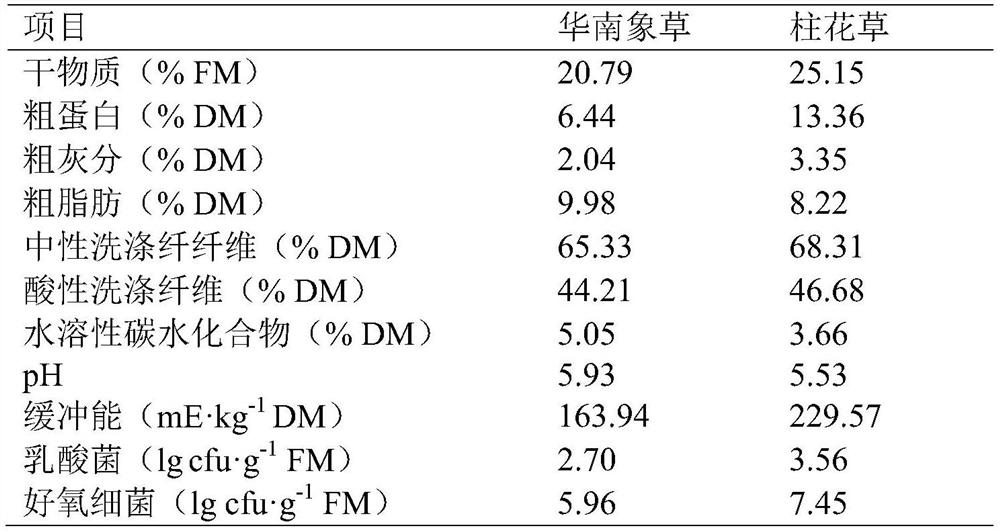Oxygen-resistant lactobacillus plantarum and application thereof
A lactic acid bacteria, oxygen-resistant technology, applied in the application, bacteria, separation of microorganisms and other directions, can solve the problems of reducing the quality and utilization efficiency of silage, loss of nutrients, slow pH drop, etc., to improve the quality of silage fermentation, easy to use, and effective more effect
- Summary
- Abstract
- Description
- Claims
- Application Information
AI Technical Summary
Problems solved by technology
Method used
Image
Examples
example 1
[0023] Example 1: Isolation, screening and physiological and biochemical determination of lactic acid bacteria
[0024] 266 strains of lactic acid bacteria were isolated from 26 kinds of materials such as elephant grass, Italian ryegrass, alfalfa, stylo, paspalum, silage such as elephant grass, corn, soil, and cow dung, and carried out Gram staining and Observation of cell shape, and according to aerobic culture and growth pH (3.5, 4.0, 4.5, 7.5, 8.0, 8.5) and other experiments to screen out oxygen-resistant, acid-resistant and fast-growing lactic acid bacteria SXC48. The specific steps are as follows: sterilize several Erlenmeyer flasks filled with 500mL distilled water, test tubes filled with 9mL distilled water, MRS solid medium and plate, and then pour the MRS solid medium into the plate after sterilization; under sterile conditions, Take 10g of the sample in a plastic bag, add 90mL of sterilized distilled water and shake evenly to make the final concentration 100g / L, then...
example 2
[0039] Example 2: Identification of Lactic Acid Bacteria
Embodiment 1
[0040] The bacterial strain obtained in Example 1 was cultured overnight at 37°C in 5 mL of MRS medium, the bacterial solution was transferred into a 1.5 mL centrifuge tube, centrifuged at 10,000 rpm for 3 min to 5 min to collect the bacteria, and TE (10 mmol / L Tris-HCl, 0.1 mmol / L EDTA , pH 8.0) solution to wash twice, then extract the full-length gene of lactic acid bacteria SXC48, and then use PCR amplification primers 25F (5'-AACTGAAGAGTTTGATCCTGGCTC-3') and 1492R (5'-TACGGCTACCTTGTTACGACT-3') to amplify 16SrDNA The gene (specifically as follows) was sent to Huada Genomics (China) for sequencing, and related sequences were compared on NCBI, and SXC48 was determined to be Lactobacillus plantarum.
[0041] GCGTCAGTTACAGACCAGACAGCCGCCTTCGCCACTGGTGTTCTTCCATATATCTACGCATTTCACCGCTACACATGGAGTTCCACTGTCCTCTTCTGCACTCAAGTTTCCCAGTTTCCGATGCACTTCTTCGGTTGAGCCGAAGGCTTTCACATCAGACTTAAAAAACCGCCTGCGCTCGCTTTACGCCCAATAAATCCGGACAACGCTTGCCACCTACGTATTACCGCGGCTGCTGGCACGTAGTTAGCCGTGGCTTTCTGGTTAAATACCG...
PUM
 Login to View More
Login to View More Abstract
Description
Claims
Application Information
 Login to View More
Login to View More - Generate Ideas
- Intellectual Property
- Life Sciences
- Materials
- Tech Scout
- Unparalleled Data Quality
- Higher Quality Content
- 60% Fewer Hallucinations
Browse by: Latest US Patents, China's latest patents, Technical Efficacy Thesaurus, Application Domain, Technology Topic, Popular Technical Reports.
© 2025 PatSnap. All rights reserved.Legal|Privacy policy|Modern Slavery Act Transparency Statement|Sitemap|About US| Contact US: help@patsnap.com



